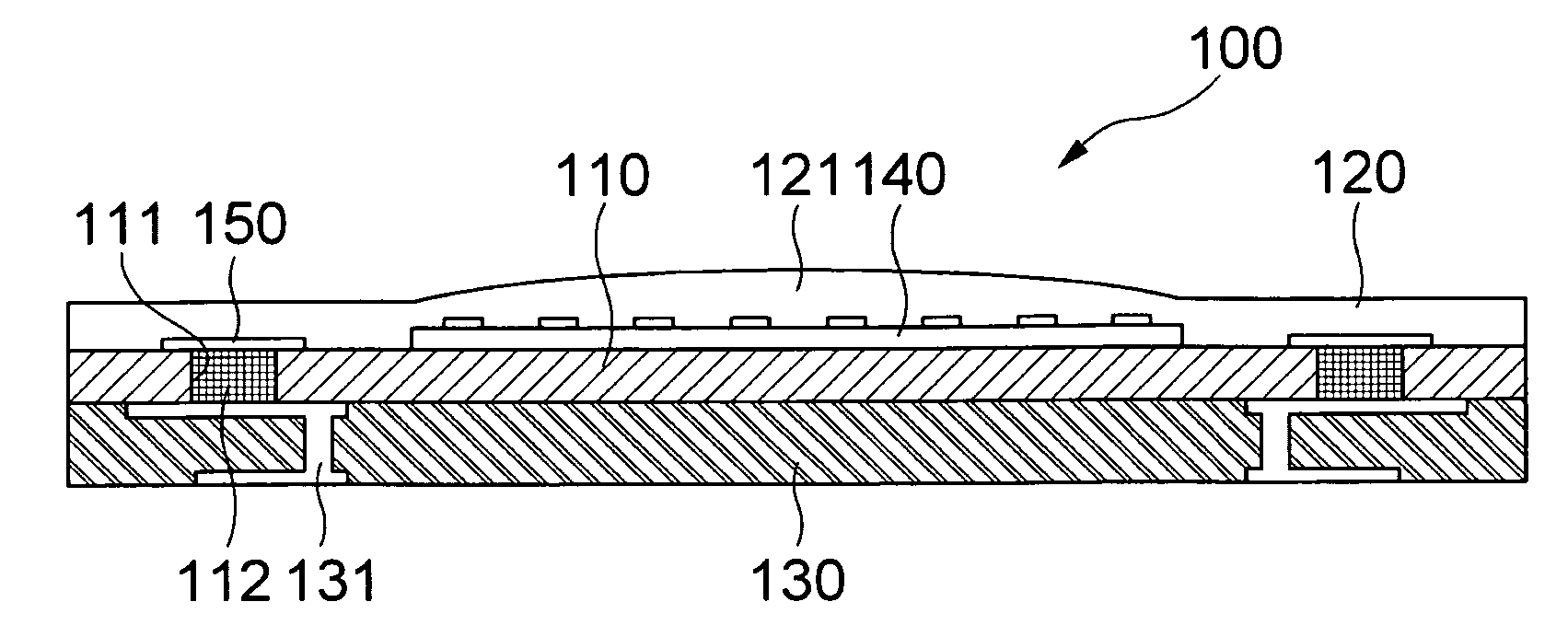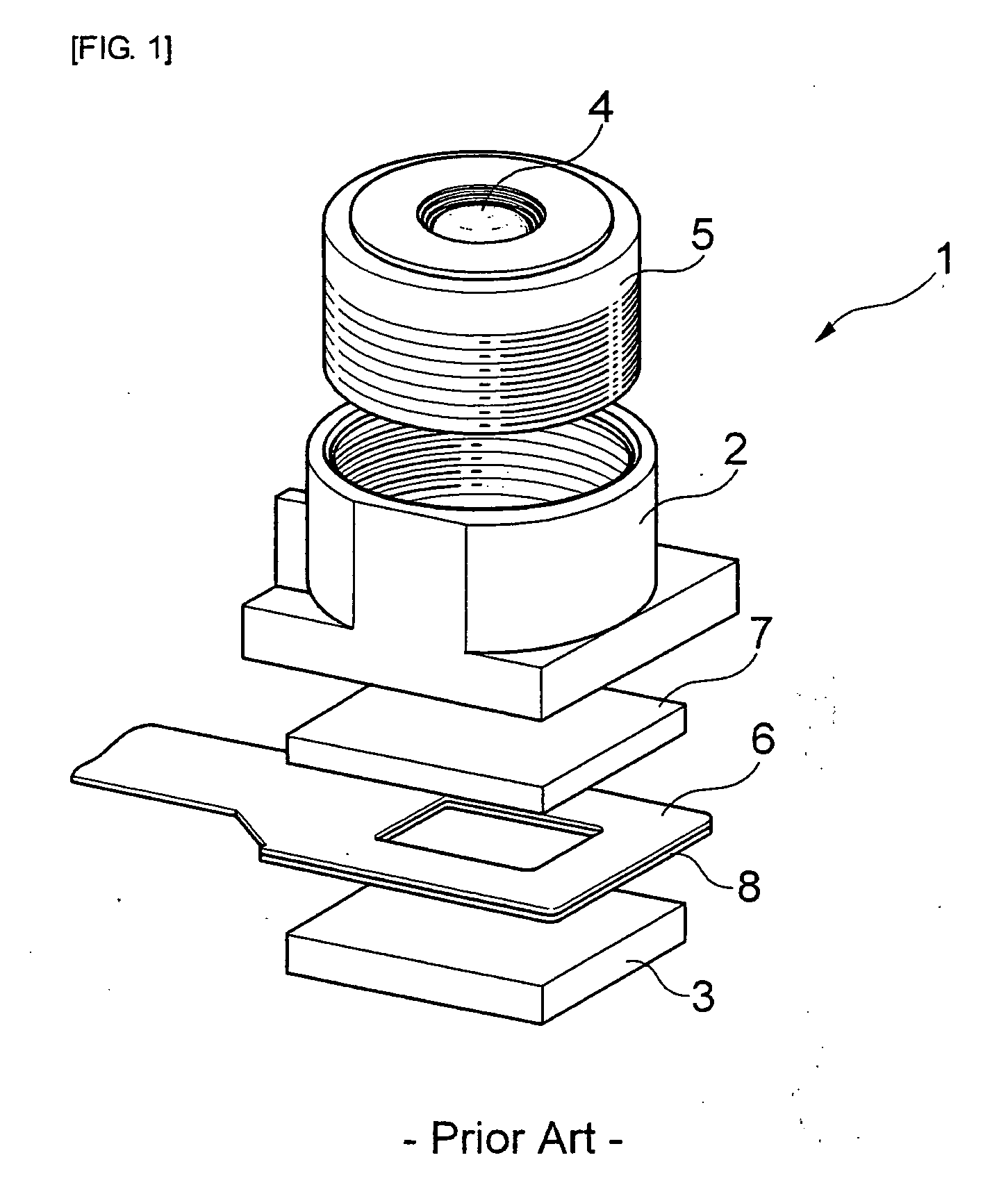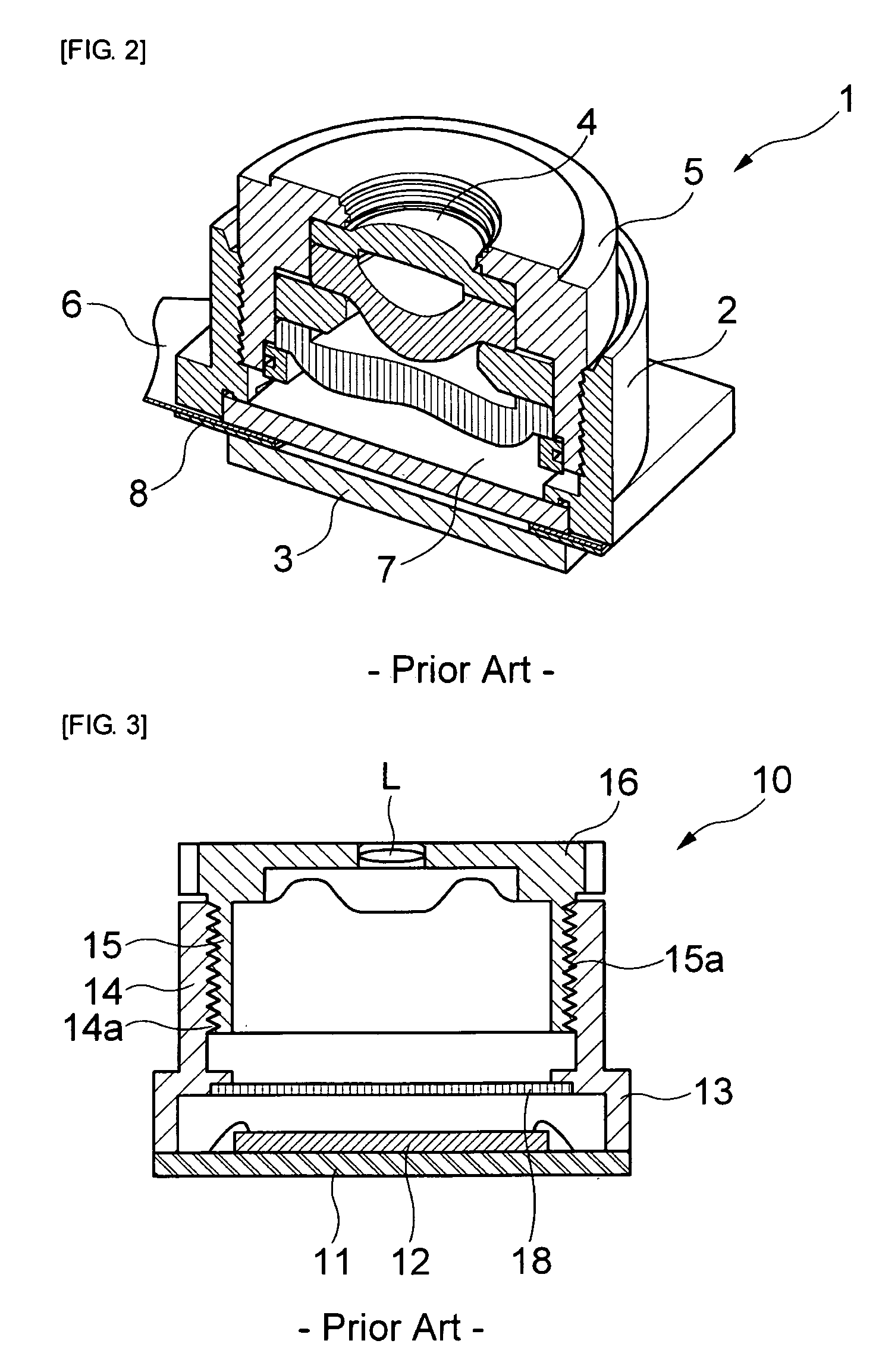Camera module package and method of manufacturing the same
- Summary
- Abstract
- Description
- Claims
- Application Information
AI Technical Summary
Benefits of technology
Problems solved by technology
Method used
Image
Examples
first embodiment
[0102]FIGS. 18A to 18E are flowcharts in which a lens unit is formed by the laminating method using the monolayer film sheet adopted in the invention. As shown in the figure, a film sheet 120a made of a polymer used at the time of manufacturing the lens is adhered onto the top surface of the wafer 110 including the top surface of the image sensor 140 by using a laminator apparatus (see FIG. 18B).
[0103]At this time, the film sheet 120a is preferably made of a photosensitive material.
[0104]Next, a pattern 120a′ is formed on the film sheet 120a by a photolithography process, that is, processes such as an exposure, a development, and the like (see FIG. 18C) and the lens 121 is formed as a formation part of the pattern 120a is softened by performing a reflow process in a state that the pattern 120a′ is formed on the film sheet 120a (see FIG. 18D).
[0105]After then, the individual camera module packages are manufactured as the wafer 110 is diced along the scribe line 180 formed between the...
second embodiment
[0106]FIGS. 19A to 19F are flowcharts in which the lens unit is formed by the laminating method using the multilayer film sheet adopted in the invention. As shown in the figure, a first film sheet 120a is adhered onto the top surface of the wafer 110 including the top surface of the image sensor 140 by using the laminator apparatus (see FIG. 19B).
[0107]The top surface of the first film sheet 120a is thinned by the exposure, the development, or the thinning process. A second film sheet 120b is laminated on the top surface of the first film sheet 120a (see FIG. 19C).
[0108]The second film sheet 120b is made of a photosensitive material and a pattern 120b′ is formed on the second film sheet 120b through the photolithography process, that the processes such as the exposure, the development, and the like (see FIG. 19D).
[0109]Herein, a principal object to adhere the first film sheet 120a first is to strength adhesion force between the second film sheet 120b to be applied hereafter and the ...
third embodiment
[0113]FIGS. 20A to 20E are flowcharts in which the lens unit is formed by the laminating method using the film sheet having the pattern adopted in the invention. As shown in the figure, the first film sheet 120a is adhered onto the top surface of the wafer 110 including the top surface of the image sensor 140 by using the laminator apparatus (see FIG. 20B).
[0114]The top surface of the first film sheet 120a is thinned by the exposure, the development, or the thinning process. The second film sheet 120b having patterns arranged with equal spacing is laminated on the top surface of the first film sheet 120a (see FIG. 20C).
[0115]Since the lens 121 may be formed without the process such as the exposure or the development, the second film sheet 120b needs not to be made of the photosensitive material. The photolithography process for forming the lens pattern 121b′ described in the above-mentioned embodiments may be omitted.
[0116]Herein, the principal object to adhere the first film sheet ...
PUM
 Login to View More
Login to View More Abstract
Description
Claims
Application Information
 Login to View More
Login to View More - R&D
- Intellectual Property
- Life Sciences
- Materials
- Tech Scout
- Unparalleled Data Quality
- Higher Quality Content
- 60% Fewer Hallucinations
Browse by: Latest US Patents, China's latest patents, Technical Efficacy Thesaurus, Application Domain, Technology Topic, Popular Technical Reports.
© 2025 PatSnap. All rights reserved.Legal|Privacy policy|Modern Slavery Act Transparency Statement|Sitemap|About US| Contact US: help@patsnap.com



